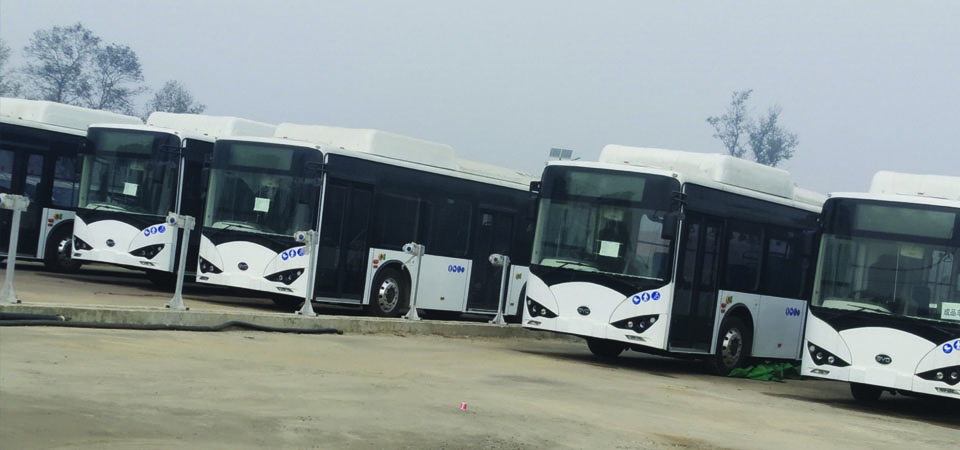Imported electric vehicles not in use for months in Lumbini

By Our Correspondent
Bhairahawa, Mar. 11: Even three months after the electric vehicles were brought to Lumbini, they have not come into operation. The risk of damages to the imported taxis and buses is increasing due to the delay.
Three buses had been introduced on November 25 last year. Likewise, two other buses and 14 taxis had been brought on Dec. 21 of the same year. Electric charging stations have also been installed in their parking stations.
The Lumbini Development Trust claimed that they were still figuring out how to run the vehicles, that is why they were experiencing a delay.
Planning chief at the Trust Saroj Bhattarai said that they failed to operate them and they were preparing to open a tender to allow others to operate them.
Arrivals of the vehicles imported from China were also delayed by one and a half months. It has already been three months since they arrived in Lumbini. If they are kept idle for a couple of months more, they are bound to go dysfunctional. Experts say that if such vehicles are not operated for long, various problems may arise; the parts may get damaged and may fall apart.
Further, the Tourism Ministry has not handed the vehicles over to the Trust yet. Member Secretary of the Trust, Sanu Raja Shakya, said that the delay was caused by technical inspection. The Asian Development Bank (ADB) officials also visited Lumbini to inspect the imported electric vehicles.
The vehicles were brought to Lumbini with the financial assistance of Rs. 130 million from ADB-funded Clean Energy Project. Nepal government paid Rs. 35 million as the customs duty of the vehicles.
These electric vehicles will be used to ferry the tourists to Lumbini from the Gautam Buddha International Airport, Bhairahawa. These vehicles shall help tourists navigate important Buddhist sites like Tilaurakot, Ramgram and Devdaha.
The buses have 19 seats for passengers and space for 35 others to stand whereas the taxis have five seats each. These environment-friendly buses are also People with Disability (PwD)-friendly. Likewise, they are also installed with automatic entrances and exits. They can run up to 400 kilometres once charged fully.
Big industries around Lumbini have caused pollution around the world heritage site. To reduce this and convey a positive message, the buses have been introduced, said Shakya.
The construction of the charging station has completed. Over 150 KW of electricity is generated by the powerhouse. Altogether 33 charging booths have been made. Among these, three are quick chargers. A bus with 80 KW capacity, and two minibuses with 40 KW capacity each can be charged at the same time. It takes 30 minutes to charge the batteries fully from a quick charger. The remaining normal chargers take up to an hour to charge the batteries fully. These normal chargers are mainly for jeeps and cars. The charging station made by a Japanese company, Isaka Electric Company, can charge up to 13 vehicles simultaneously.
Besides, 75 rickshaw charging points too shall be installed there. With the aim to replace the petroleum-driven vehicles with electric ones, Lumbini has invested Rs. 130 million for the construction of the charging station.
Recent News

Do not make expressions casting dout on election: EC
14 Apr, 2022
CM Bhatta says may New Year 2079 BS inspire positive thinking
14 Apr, 2022
Three new cases, 44 recoveries in 24 hours
14 Apr, 2022
689 climbers of 84 teams so far acquire permits for climbing various peaks this spring season
14 Apr, 2022
How the rising cost of living crisis is impacting Nepal
14 Apr, 2022
US military confirms an interstellar meteor collided with Earth
14 Apr, 2022
Valneva Covid vaccine approved for use in UK
14 Apr, 2022
Chair Prachanda highlights need of unity among Maoist, Communist forces
14 Apr, 2022
Ranbir Kapoor and Alia Bhatt: Bollywood toasts star couple on wedding
14 Apr, 2022
President Bhandari confers decorations (Photo Feature)
14 Apr, 2022










